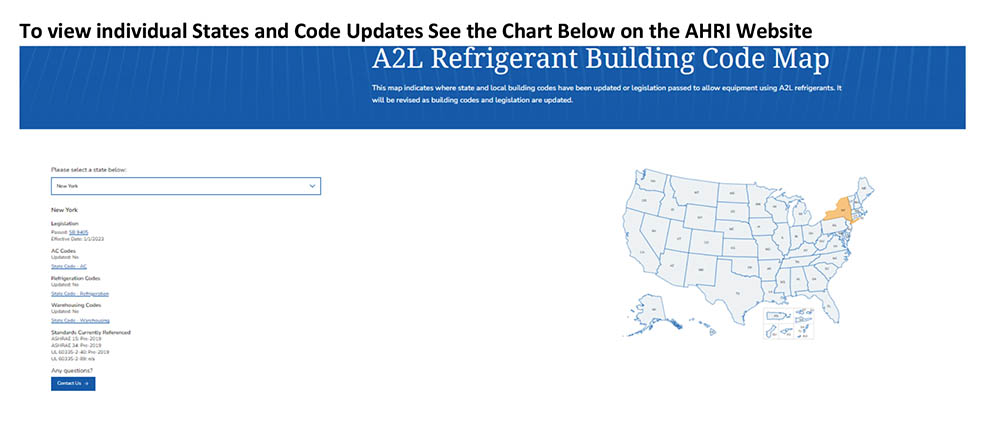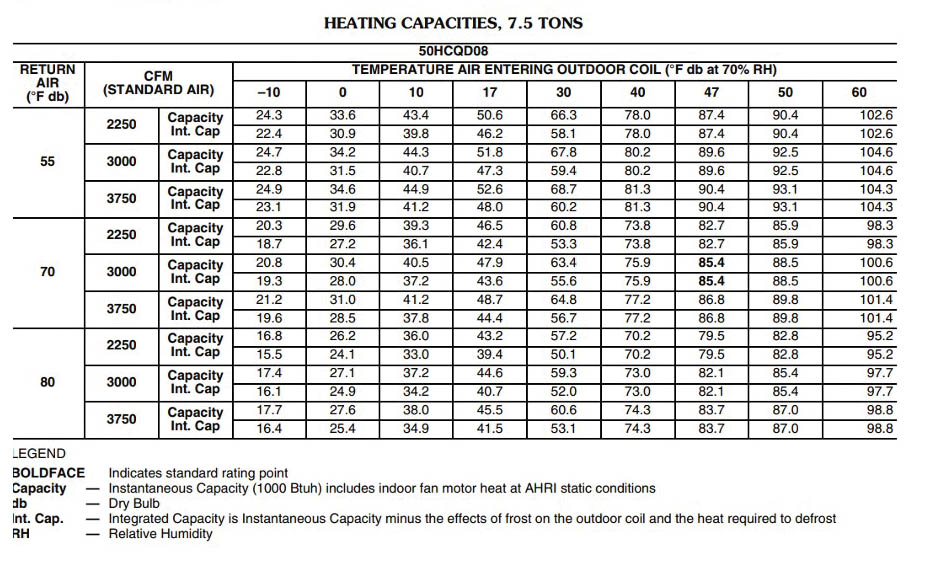— By Ron Prager —
HVAC: Major changes in the industry have arrived.
There are major changes occurring in the HVAC industry and they are going to affect both HVAC contractors and end users in a significant way. We anticipate that these changes will also impact building codes, cost of construction and cost of equipment installation. Some of what is presented below is established fact and some is based on my best guess as to what we believe the impacts will be. I will identify which items fall into which category below:
I. A2L Refrigerant
As of January 1, 2025 newly manufactured packaged HVAC units must be charged with an A2L Refrigerant (Slightly Flammable).

Over the past 30 years, the HVAC industry has experienced the phase-out of many refrigerants. The first group of refrigerants (HCFCs including R22) was phased out due to damage caused to the ozone layer that protects the Earth from the sun’s ultraviolet radiation. During the phase-out of R22, R410A (an HFC) was the new refrigerant of choice utilized in most packaged air conditioning equipment. Its properties differed from R22 in that it was actually a mixture of refrigerants and the equipment operated at higher pressures; both R22 and R410A have a safety classification of A1. (Non-flammable)
While R410A has zero ozone depletion potential, it is considered a “Greenhouse Gas,” and has a relatively high “Global Warming Potential” (GWP); therefore laws have been enacted requiring that as of January 1, 2025, new equipment be charged with refrigerants that have a significantly lower GWP. There are currently two refrigerants, R454B and R32, that meet this requirement and will be used in new units. These refrigerants fall into the safety classification “A2L,” which is defined as non-toxic, flammable, low burning velocity.
This change in refrigerant will have a significant impact on contractors installing and repairing these systems with respect to both tools and equipment, requirements and process. We believe those impacts to be as follows:
1. Most refrigerant recovery machines currently in use today are not capable of being used to extract A2L refrigerants. Contractors will need to provide every technician servicing systems containing A2L refrigerant with a new recovery machine at a cost of approximately $1,000.
2. Some vacuum pumps and charging manifolds in use today are not rated to be used with A2L refrigerants, and technicians will have to replace these.
3. Most electronic refrigerant leak detectors in use today cannot be used on A2L refrigerants, and technicians will need to purchase new detectors.
4. Refrigerant tanks containing A1 refrigerants currently have a rupture disk that blows out, causing all of the refrigerant in the tank to be discharged if the pressure in the tank exceeds a safe level. Tanks containing A2L refrigerants must be equipped with a pressure relief valve that limits the quantity of refrigerant discharged if an over-pressure condition exists and closes when pressures drop to safe levels. Technicians will now need to carry recovery tanks fitted with these devices, and tanks containing virgin A2L refrigerants will need to be equipped with these devices.
5. Refrigerant tanks storing A2L refrigerant will be fitted with left-hand threads and must be marked in a way that states they contain an A2L refrigerant. Also, these tanks must be stored and transported in such a way that the relief valves are in contact with the vapor phase of the refrigerant.
6. All technicians working on systems containing A2L refrigerants will have to be trained, and I believe certified with respect to handling, storage and new service procedures.
7. After the refrigerant has been recovered from a system, the system will need to be purged with nitrogen and fully evacuated to ensure no refrigerant remains prior to performing any brazing process. Once brazing is complete, the systems will have to be purged and evacuated again.
8. It is my opinion that most contractors will require that two technicians be dispatched for any refrigeration circuit repair on a system containing an A2L refrigerant.
9. The quantities of A2L refrigerant carried in service vehicles and stored indoors will be limited and leak detection equipment may be required in these areas as well as in machine rooms.
10. In my opinion many contractors will opt not to perform brazing operations on systems containing A2L refrigerants unless no other option exists. Where possible, I believe we will see contractors use pressed fittings such as “Zoomlock” in lieu of brazing where possible. These fittings are extremely expensive ad require the use of a $3,500 pressing tool for installation.
11. As the allowable quantity of R410A is reduced, the cost of R410A is anticipated to rise radically and potential shortages may occur.
New Equipment Impact:
1. At this time, most major manufacturers are continuing to build equipment containing R410A as they have not yet changed their production lines over to produce new models containing A2L refrigerants.
2. The current federal rules allow equipment produced or imported into the U.S. prior to January 1, 2025 containing R410A to be utilized on new and replacement installation projects; however, each state may enact its own regulations and I believe there is the possibility that some states may not allow any R410A equipment to be installed after January 1, 2025 regardless of when the equipment was manufactured.
3. Currently as of the writing of this article (February 2024), equipment product data and submittals for A2L units have not been made available to the public from most major manufacturers, and we are looking at lead times of 22 weeks from the order date for new units. With submittals unavailable and extended lead times, one has to ask the question how are store designers and engineers dealing with designing 2025 projects with respect to equipment weights, physical sizes and electrical characteristics?
4. We do not yet know what the requirements will be with respect to indoor storage of new units containing A2L refrigerants.
5. We do know that new residential equipment containing A2L refrigerants will be required to have refrigerant leak sensors installed that shut down compressor operation and energize blowers when refrigerant leakage is sensed, but I am uncertain how this will be applied to commercial units.
6. The HVAC industry has experienced extended lead times for new packaged equipment since the COVID-19 shutdown. We have seen availability vary between 20 and 40 weeks versus 8 to 12 weeks prior to COVID. Considering the issues manufacturers have had delivering equipment with only minor component changes over the past 4 years, one has to question how availability will be affected by a change to a completely different class of refrigerant and the use of components such as compressors and metering devices designed for that refrigerant.
II. Electrification
Most retail sites and restaurants in the U.S. are currently served by equipment that burns a fossil fuel to meet the space heating requirements of those sites. Changes to codes and regulations are being enacted to disallow the use of equipment that burns fossil fuels in the future. The driver here is the assumption that electricity will be produced in sufficient quantities by solar energy, wind turbines, etc., to provide power for space heating and this will prevent the discharge of the products of combustion into the atmosphere by the packaged equipment or the power plant.
We are currently seeing some municipalities enacting rules that prevent new buildings being constructed with fossil fuel heat and others that are requiring that if existing gas fired packaged equipment is replaced, it must be replaced with units that heat using only electricity.
When heating with electricity as the energy source there are two options:
1. Electric Resistance Heat
2. Heat Pumps
Electric resistance heat operates like your toaster where power flowing through a Nichrome Wire causes that wire to increase in temperature and air from within the conditioned space is passed over the hot wire.

Heat pumps use a process known as “reverse cycle air conditioning.” During normal air conditioning operation, heat is transferred from the air in the conditioned space to the air outdoors. If we reverse the cycle, heat is transferred from the outdoor air to the air within the conditioned space. Think of what would happen if you took a window air conditioner and turned it 180 degrees in the window. The cool air would be discharged to the outdoors, and the hot air would be discharged indoors. The advantage of heat pumps is that they are far more efficient than electric resistance heat, producing up to three times as much heat using the same amount of power. The disadvantage of heat pumps is that their heating capacity drops as the outdoor temperature drops. Unfortunately, the capacity required to heat a building increases as outdoor temperature drops. In cold climates you reach a point (the balance point) where the required heating capacity exceeds the unit’s heating capacity. In these situations, supplemental electric resistance heaters are installed in the units to make up the difference in capacity. The downside with this situation is that we are now running compressors and electric resistance heating simultaneously to provide the required heating capacity and this may require significantly more power than an air conditioning unit that used fossil fuel for heating. At a minimum this will cause the power feeders to each unit to be upsized.
We have seen situations when replacing gas fired units where the municipality required that the units be replaced with heat pumps, but the electrical service to the building had to be upgraded because the new units required so much additional power.
Please see the chart above that shows heat pump heating capacity versus outdoor air temperature for a 7.5 ton Carrier unit.
III. Dedicated Outdoor Air Systems (DOAS)
Typically, when packaged equipment is used to heat and cool a space, the minimum quantity of outdoor air required for ventilation is introduced through the packaged equipment and the same quantity of air from within the space is exhausted to the outdoors. This can result in a significant waste of energy considering the capacity required to take outdoor air at 95°F and 80% humidity and condition it to 75°F and 50% humidity. Similarly, we need to consider the energy required to take outdoor air at 0°F and heat it to 68°F.
If we can build a system that pre-cools outdoor air and pre-heats outdoor air by transferring heat between the air exhausted from the building to the outdoor air being introduced, there is a potential to save a great deal of energy and cost. This is the purpose of a dedicated outdoor air system (DOAS) with heat recovery. This type of system is now being required by some municipalities; we anticipate this requirement to extend to other areas in the near future.
This requirement will result in substantially greater first cost when building out a space as a dedicated unit with heat recovery capability must be purchased and installed, and a separate ducted ventilation system must be designed and installed to make certain that all areas of the conditioned space receive the quantity of outdoor air required by code for ventilation purposes. The fact that a site is equipped with a DOAS system does not eliminate the requirement for outdoor air economizers on each packaged unit.
While this article addresses the three major areas of change currently within the HVAC industry, we anticipate further changes going forward driven by the topics addressed above.
— Ron Prager is chief operating officer of Brinco Mechanical Management Services, Inc., which is committed to providing the highest quality of national commercial HVAC and refrigeration management services. For over 40 years, Brinco has delivered that service with professionalism, transparency, dedication and expertise. Email the author at [email protected] or visit www.brinco.com.

